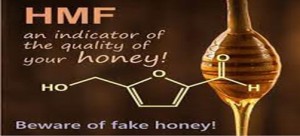
The Significance of HMF Content Testing in Assessing the Quality of Honey Samples
Introduction:
Honey, a natural sweetener produced by bees, is not only renowned for its exquisite taste but also for its numerous health benefits. However, the quality of honey can be influenced by various factors, and one important parameter used to evaluate its freshness and authenticity is Hydroxymethylfurfural (HMF) content. This essay explores the significance of HMF content testing in honey samples, delving into its role in determining honey quality, ensuring consumer safety, and preventing fraudulent practices in the honey industry.
Understanding HMF:
Hydroxymethylfurfural (HMF) is a natural compound that forms in honey during storage and processing. It is a product of the breakdown of sugars, particularly fructose, and its presence is influenced by various factors such as temperature, pH, and storage conditions. While low levels of HMF are considered normal in honey, excessive amounts can indicate poor handling, prolonged storage, or adulteration.
1. Freshness Indicator:
The HMF content serves as a reliable indicator of the freshness of honey. Freshly harvested honey typically has low HMF levels, and an increase over time suggests chemical changes associated with aging or poor storage conditions. Monitoring HMF content helps beekeepers and honey processors assess the quality of their products, ensuring that consumers receive honey at its peak freshness.
2. Quality Assessment:
High-quality honey is characterized by low HMF levels, reflecting minimal exposure to adverse storage conditions or prolonged storage periods. Quality assessments based on HMF content are crucial for maintaining the reputation of honey as a premium and unadulterated product. By establishing HMF benchmarks, producers can adhere to quality standards and meet consumer expectations for pure and fresh honey.
3. Temperature and Storage Control:
HMF formation is accelerated at elevated temperatures, especially when honey is exposed to heat for extended periods. Temperature control during honey processing and storage is essential to limit HMF accumulation. By conducting regular HMF tests, beekeepers and honey processors can implement effective temperature control measures, mitigating the risk of quality degradation due to excessive heat exposure.
4. Preventing Adulteration:
Adulteration, the intentional addition of sugars or syrups to honey, can significantly impact HMF levels. The detection of elevated HMF content is a key indicator of potential adulteration, as the added sugars contribute to increased furfural compounds in honey. Rigorous HMF testing acts as a deterrent against fraudulent practices, ensuring that consumers receive authentic honey products.
5. Consumer Safety:
Excessive HMF levels in honey can be associated with a decline in nutritional quality and potential health risks. Monitoring HMF content is crucial for safeguarding consumer health, as the compound has been linked to adverse effects when present in large quantities. Establishing maximum permissible HMF levels in honey ensures that products reaching consumers are safe and meet regulatory standards.
6. International Trade Compliance:
Many countries have established regulations and standards for HMF content in honey to facilitate international trade. Adhering to these standards is essential for honey producers and exporters, as non-compliance may result in trade barriers. HMF testing plays a pivotal role in ensuring that honey exports meet the established criteria, facilitating smooth international trade and promoting consumer confidence.
Conclusion:
In conclusion, HMF content testing is a vital aspect of honey quality assessment, providing valuable insights into the freshness, authenticity, and safety of honey products. By monitoring HMF levels, beekeepers, honey processors, and regulatory authorities can collectively contribute to the integrity of the honey industry. Rigorous testing not only ensures that consumers receive high-quality, unadulterated honey but also helps maintain the industry's reputation as a source of pure, natural, and healthful products.
